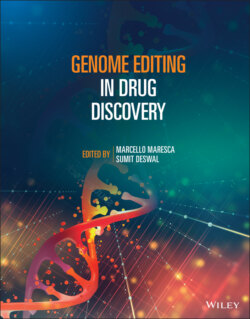Читать книгу Genome Editing in Drug Discovery - Группа авторов - Страница 71
4.5.4.2 Confirmation of Genetic Manipulation at RNA Level
ОглавлениеGene KO clones can also be QC analyzed at the mRNA level via RT‐PCR or RT‐qPCR. This is based on the assumption that mRNAs with frameshift indels are noncoding and are subjected to nonsense mediated decay (NMD) (Popp and Maquat 2016). While this is the case for many genes with frameshift indels in defined cells, some edited RNAs have been observed to escape NMD (Smits et al. 2019). Further analyses revealed that these NMD‐independent RNAs persist in cells via mechanisms involving alternative translation initiation, in‐frame exon skipping, or simply location of indel‐derived premature termination codon (Popp and Maquat 2016; Tuladhar et al. 2019). As such, RT‐qPCR is not commonly used as a quality control assay in gene KO experiments. Nevertheless, targeted RT‐PCR followed by gel electrophoresis or DNA sequencing analysis can reveal detailed information about variant RNA species transcribed from the edited gene, which can facilitate picking of appropriate cell clones for downstream functional analysis. It should be noted that RNA‐based QC assays may become essential when the edited site/sequence involves expression or function of a noncoding RNA (i.e. microRNA, lncRNA).
In designing HDR‐based knock‐in experiments for nucleotide mutation generation, a frequently raised question is whether to incorporate a silent codon mutation corresponding to the PAM sequence in the donor sequence. Such “PAM‐silent” mutations, once incorporated into the target site, will block re‐cleavage by the CRISPR nuclease. This has become a common practice for SNP/mutation generation to increase KI efficiencies especially when it is low (i.e. <5%). However, this would inevitably introduce a nucleotide mutation in the edited site, albeit as a silent codon change. This silent codon change may have an impact on mRNA (stability, secondary structure, or translation efficiency) and further confound the effect of the targeted nucleotide SNP/mutation on mRNA. It is therefore preferred not to adopt the PAM‐silent strategy, especially if the editing efficiencies are greater than 10%. If used, a QC assay at the mRNA level (i.e. RT‐qPCR) will need to be applied to assess the effect of the mutations (the on‐target nucleotide change plus PAM‐silent mutation) on mRNA among isogenic lines before functional assays are applied.
